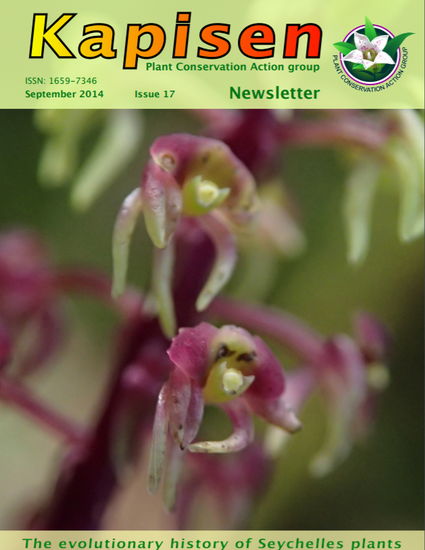
Article
Biogeography, Conservation and Diversity of Pandanaceae in the Granitic Seychelles Islands
Kapisen: Plant Conservation Action Group Newsletter
(2014)
Abstract
Pandanaceae (screwpines or “Vakwa” in Creole) are easily distinguishable by their long leathery evergreen leaves with prickly margins, usually spirally arranged at the end of branches. Stems often bear leaf scars and stilt roots at their base. The reproductive structures are on separate plants (the family is therefore “dioecious”). The male flowers are very simple with no petals and are particularly ephemeral. The female flowers are pineapple like and develop into distinctive fruits made of tightly arranged sections or drupes (containing the seeds). Screwpines are used for various purposes and are commonly grown as ornamental plants. In south-east Asia, leaves of Pandanus amaryllifolius are used for cooking, adding a specific aroma to chicken and green food colouring to desserts. In Micronesia, especially on the atolls, the fruits of Pandanus tectorius sensu lato are eaten cooked as a major source of starch. In Seychelles, the elongated roots of Pandanus sechellarum were once cut lengthwise into 4 (“lati”) and used in the construction of decorative house walls.
Disciplines
Publication Date
September, 2014
Citation Information
Martin W. Callmander and Sven Buerki. "Biogeography, Conservation and Diversity of Pandanaceae in the Granitic Seychelles Islands" Kapisen: Plant Conservation Action Group Newsletter Vol. 17 (2014) p. 8 - 9 ISSN: 16597346 Available at: http://works.bepress.com/sven-buerki/7/
